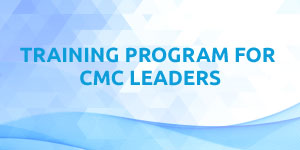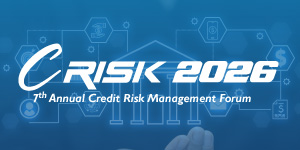Free knowledge to monitor the world of events. Have a look at our must read Blogs on Pharma, Finance, HR, Health and Cross Industry.
Benefits of Agile Auditing
2022-03-02
Internal audits are a necessary for any organization that wishes to last a long time, be successful, and have a good reputation. Internal auditing provides management with a wealth of valuable information by providing an independent and objective review of corporate activities, allowing for unbiased and informed decision-making.
Internal auditing has a plethora of advantages and so plays a critical part in supporting a company's success. Internal audits must, however, be carried out effectively in order to achieve those benefits, and agile methodology offers auditors and their clients with a solid foundation for doing so.
The Agile Manifesto for Software Development popularized the term "Agile" to designate a collection of concepts and practices that were originally developed for use in software development. Agile allows project teams to concentrate on providing value while acknowledging that traditional project management approaches follow a linear procedure that slows teams down. To put it another way, agile methodology is all about keeping flexible and in touch with the client on a regular basis. It supports frequent observations on job progress and prioritizes short-term planning, allowing you to quickly adjust to changes and mitigate project risks. Agile auditing includes using the agile technique from the software development sector to the auditing process. Like other agile approaches, Agile auditing, like other agile approaches, often entails working in short, iterative periods known as sprints or a more flexible project management procedure known as Kanban to complete the entire agile audit methodology from planning to presenting and reviewing outcomes.
The common Agile Methodologies
Agile is a project management methodology that combines several approaches. The methodology you use will be determined by your team's specific demands, as well as your priorities, methods, and organizational goals. Here's a basic rundown of what each one entails.
Scrum
Small cross-functional teams work on audit tasks over short periods of time using the Scrum approach. The following categories are used to track the progress of audit tasks: backlog, to do, in progress, and completed tasks. The Scrum team is self-governing, and each sprint's tasks are determined by them. They decide on the audit activities and deliverables that will be the focus of each sprint and plan them accordingly.
Kanban
Kanban is similar to Scrum in that it tracks to-do, in-process, and completed activities, but it restricts the amount of "work in progress" activities (the team management sets the limit, which cannot be surpassed).

Agile auditing enables teams to produce solutions more quickly without being locked into a single team or procedure while also improving client communication and cooperation. These are the key benefits of Agile Auditing:
Exceptional customer service
The agile technique necessitates strong collaboration between audit teams and their clients - company executives and having such a high level of client participation provides a lot more value. It eliminates the danger of miscommunication between parties and allows organizations to be truly heard by their auditors.
Retrospective assurance vs. Real-time assurance
Agile auditing is about more than just producing a standard audit report at the conclusion of a project. Instead, it enables clients to receive verbal assurance on a regular basis during each sprint. As a result, clients don't have to wait months to begin correcting internal inefficiencies and flaws.
Better working efficiency and a focus on high-value activities
You can always observe if the tasks you're working on are bringing you closer to the project goals if you use agile approaches. And if they don't, you may revise your strategy every two weeks, always responding to change and prioritizing the correct things.
Teamwork and learning effectiveness are exceptional
Agile also emphasizes strong communication among audit team members, which promotes creativity and improves overall performance quality. Having regular progress meetings boosts team morale and improves decision-making.
Changing the audit's focus and scope
With appropriate levels of permission, internal audit can amend the audit scope or even change the audit's emphasis entirely based on newly available information.

Common issues that agile auditing can solve
Frequent Audit difficulties can be solved with the successful application of agile ways of working, including:
Creating a useful and appropriate audit plan
Your audit plans given to the Audit Committee at the beginning and end of the year may not align unless your audit plan comprises exclusively of regular compliance or checklist-based tasks. Internal audit can adapt to changing business situations with the help of agile.
Keeping the audit scope up to date and making efficient use of resources
Agile allows for the scope of the audit to be updated as needed. Internal audit maximizes resource use by regularly reevaluating audit scope and priority.
Increasing customer interaction and teamwork
Agile allows stakeholders to provide relevant comments and collaborate throughout testing, empowering your audit client. Agile helps discover stakeholder issues during fieldwork by enhancing collaboration
Examples of Agile Auditing
Examining examples of internal audit teams employing an agile audit methodology will help you better understand what agile auditing is.
One example of agile auditing is delegating extremely specific audit responsibilities to a group of internal auditors, such as cooperating with compliance, and then updating the compliance component of an audit presentation to audit committees on a regular basis. This component of agile auditing can assist enhance efficiency by forming small, focused teams.
Having monthly check-ins with management to discuss business risks is another example of agile auditing. Internal auditors can then change audit plans and project management schedules more frequently to meet current risk management priorities, rather than being stuck with what they set up at the beginning of the year.
Agile is quickly gaining traction as a critical technique for audit teams. Internal audit is able to tackle common difficulties by reducing time requirements and enhancing stakeholder interaction, collaboration, and engagement.
Do you like to get more knowledge about Agile Auditing? Join our Agile Audit and Assurance In-House Training now.
By Fazmi Zakam, Junior SEO Executive, GLC Europe, Colombo Office, Sri Lanka.
Get a feel for our events

Training Program for CMC Leaders - EU edition
27th October 2025 - 16th January 2026
Rich with practical insights and real-world applications
learn more >>
Training Program for CMC Leaders - US edition
27th October 2025 - 16th January 2026
Rich with practical insights and real-world applications
learn more >>
Mastering the Common Technical Document (CTD) for Biologics Masterclass - EU edition
12-16 January, 2026
From guidelines to submissions
learn more >>














